Share this @internewscast.com
Smoothies are the perfect drink for busy people. You can quickly throw together a drink full of nutrient-dense ingredients, and it’s super easy to take smoothies with you on the go. But even though smoothies can make a great breakfast or afternoon snack, these drinks are sometimes carb-heavy and lacking in satiating nutrients like protein, which is why it’s important to focus on including a few high-protein ingredients when you go to blend your next beverage.
But why is it so important to have extra protein in your smoothies? Getting enough protein during your meals can help reduce hunger and make you feel more satiated, can improve lean muscle mass, and can help with weight loss or weight management. Recommendations for how much protein someone should have varies from person to person, but Harvard Health says we should be eating 0.36 grams of protein per pound of body weight at minimum to avoid a deficiency, but that number increases if you’re at all active. If you’re struggling to get enough with your regular meals, enjoying a high-protein smoothie can help you reach your goals.
To learn more about some of the best protein-rich ingredients to include in your smoothies, we talked with dietitian Mary Sabat MS, RDN, LD. “These ingredients provide a variety of nutritional benefits and enhance the taste and texture of your smoothies, making them both delicious and protein-packed,” she says.
Read on to learn more, and for more helpful tips, check out these 20 Best-Ever Weight Loss Smoothies.
Greek Yogurt
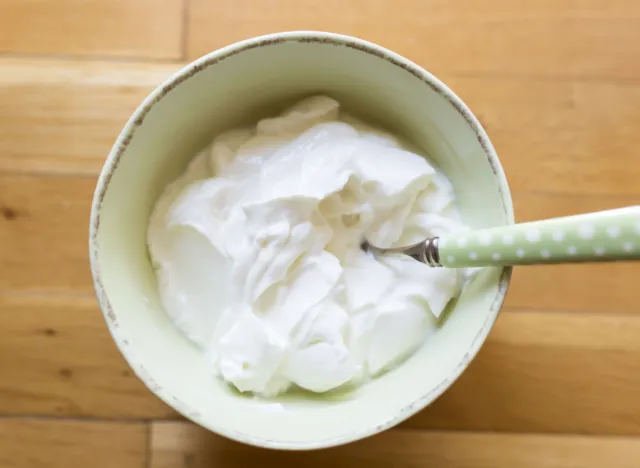
Protein per 1/2 cup: 11.3 grams
“Greek yogurt is rich in protein, offering creaminess and a tangy flavor to your smoothie while being a good protein to promote muscle growth and good digestion,” says Sabat.
Along with being rich in protein, this yogurt has other benefits like being rich in calcium and probiotics and being naturally lower in sugar than other regular yogurt varieties. Just make sure you’re buying the best kind and avoiding those with a ton of added sugar.
Protein Powder
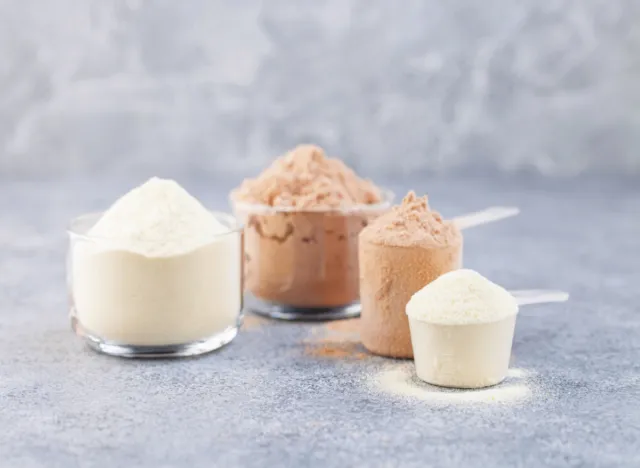
Protein per scoop (whey): 20 grams
“Protein powder significantly boosts protein content, aiding in muscle recovery and growth, and it comes in various flavors to enhance taste,” says Sabat.
“Be aware of ingredients in these shakes however and make sure they are not using artificial flavors or sweeteners like Splenda, acesulfame potassium, NutraSweet, or sugar alcohols.”
Silken Tofu
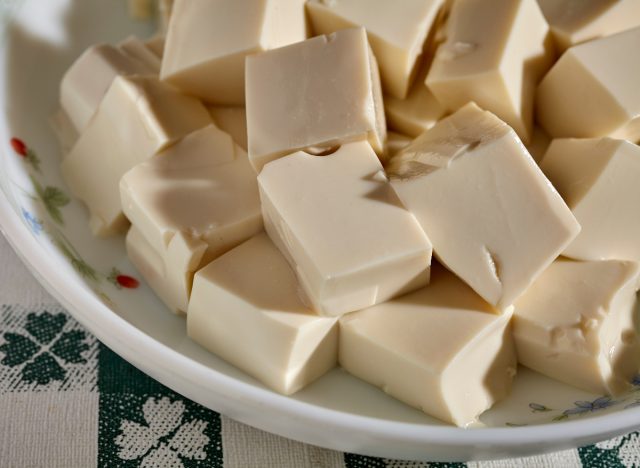
Protein per serving: 4.4 grams
“Silken tofu is a plant-based protein source that adds creaminess and thickness to your smoothie while supplying essential amino acids,” says Sabat.
Offering all of the essential amino acids sets tofu apart from many other plant-based sources of protein by making it a complete protein source. The majority of plant-based foods like nuts, seeds, and legumes are considered incomplete proteins because they don’t have all of the amino acids your body needs, and most complete proteins come from animal sources like meat, dairy, and eggs—except for some plant sources like tofu, edamame, and tempeh.
You need a combination of both complete and incomplete proteins, so eating complete proteins like tofu can help you achieve this balance.
Cottage Cheese
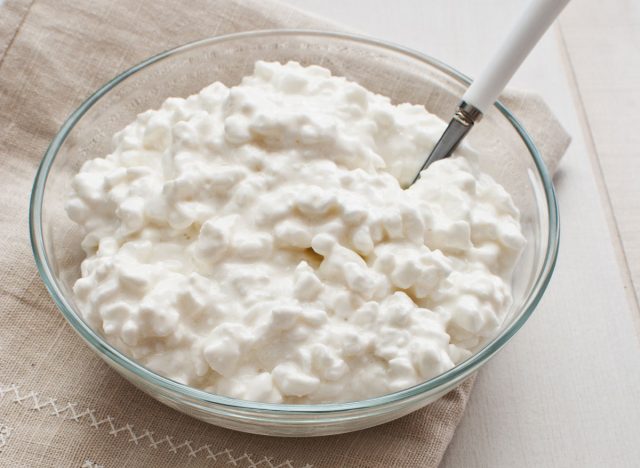
Protein per 1/2 cup: 12.1 grams
Cottage cheese has risen to fame in the last couple of years as people discover just how healthy and versatile it is. It’s high in protein and low in fat (if you get a low-fat option), and according to Sabat, it makes for a great high-protein smoothie ingredient that “provides creaminess and a mild tangy flavor.” You can also use cottage cheese in a variety of different recipes like salad dressings, pasta sauces, and homemade ice cream.
Almond Butter
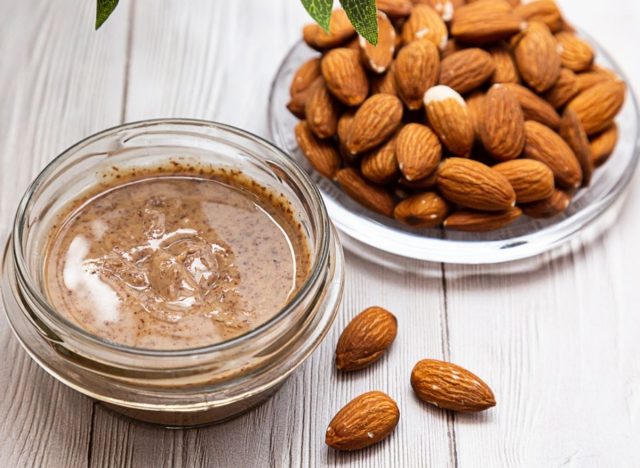
Protein per 2 tablespoons: 6 grams
With 6 grams of protein in just two tablespoons, almond butter is a tasty high-protein ingredient to add to your morning smoothie. If you don’t have any almond butter on hand, Sabat says a handful of almonds would work well, too.
“Almonds and almond butter contribute protein, healthy fats, and a nutty flavor, enhancing taste and texture,” she says. Not only that, but research shows that almonds can help reduce hunger and improve satiety, making them the perfect filling ingredient for your smoothie.
Peanut Butter
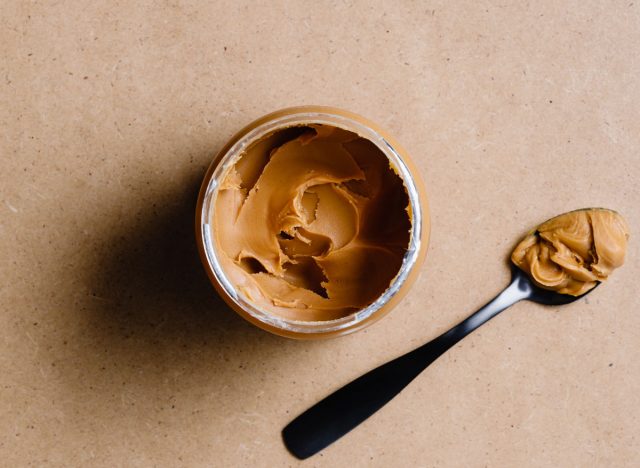
Protein per 2 tablespoons: 7.2 grams
If almond butter isn’t for you, you can always get your protein boost from a few spoonfuls of peanut butter. Whether you’re making a peanut butter and banana smoothie or going for a PB&J flavor by mixing strawberry and peanut butter, this ingredient adds flavor, creaminess, and a good amount of protein (over 7 grams) to every blended beverage.
Kefir
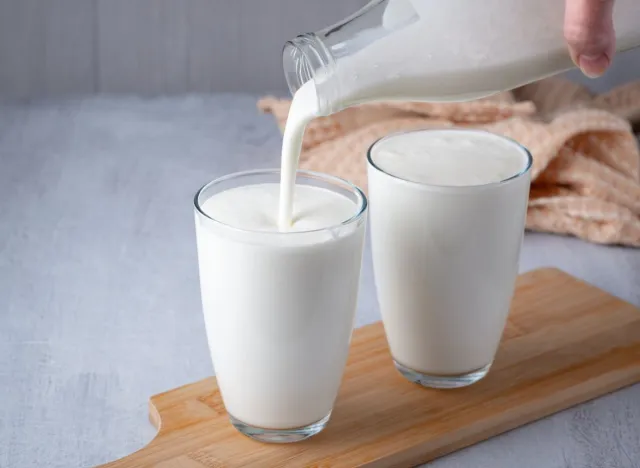
Protein per 1/2 cup: 5 grams
Kefir is somewhat of a drinkable yogurt in that it is a fermented milk drink that offers helpful protein and probiotics, as well as a deliciously tangy taste. Adding some kefir to your smoothie will give you a boost of protein and benefits for your gut health, according to research published in Frontiers in Microbiology.
Chia Seeds
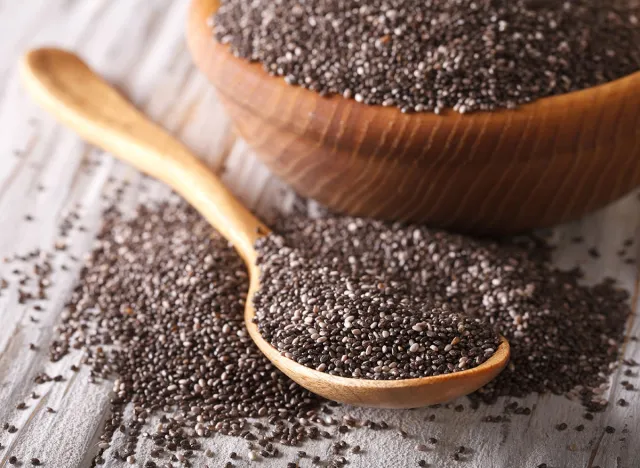
Protein per ounce: 4.7 grams
Sabat loves using chia seeds as a high-protein ingredient for smoothies because these seeds “provide plant-based protein, fiber, and omega-3s while thickening the smoothie and adding a unique gel-like texture.” Research shows that chia seeds are great sources of antioxidants and can help improve gut and cardiovascular health. Sounds like more than enough reason to put a handful in your breakfast smoothie!
Hemp Seeds or Hemp Hearts
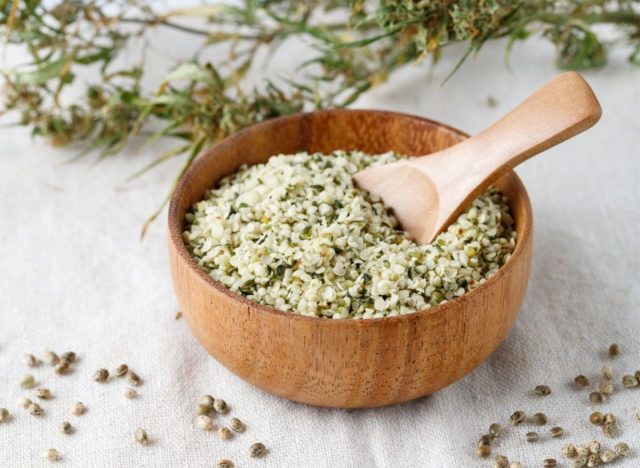
Protein per 3 tablespoons (hemp hearts): 10 grams
People often overlook hemp as a protein source, but both hemp seeds and hemp hearts (the soft inside of the seeds) make for a delicious addition to any smoothie that needs a protein boost.
“Hemp seeds offer protein, omega-3s, and a mild nutty flavor,” says Sabat. And if you want something less crunchy than the seeds, the hearts offer similar health benefits but with a softer texture.
Spinach
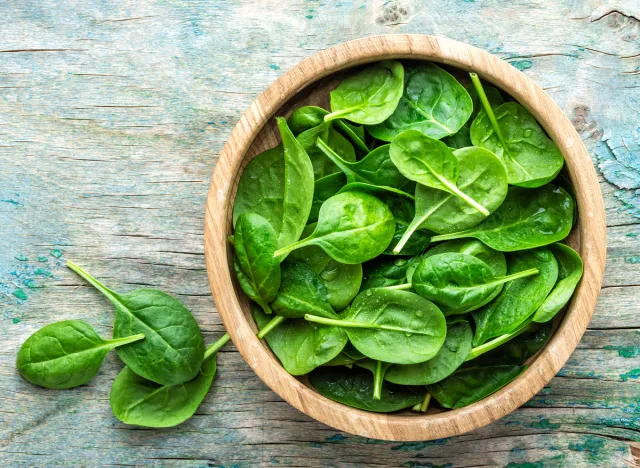
Protein per 1/2 cup (frozen): 2.8 grams
Spinach is a great smoothie ingredient because “it’s a low-calorie protein source with vitamins and minerals, imparting a vibrant green color and a silky smooth texture,” says Sabat. You can use raw spinach in your smoothie, but if you want an even creamier texture, try using frozen spinach instead.
Pumpkin Seeds
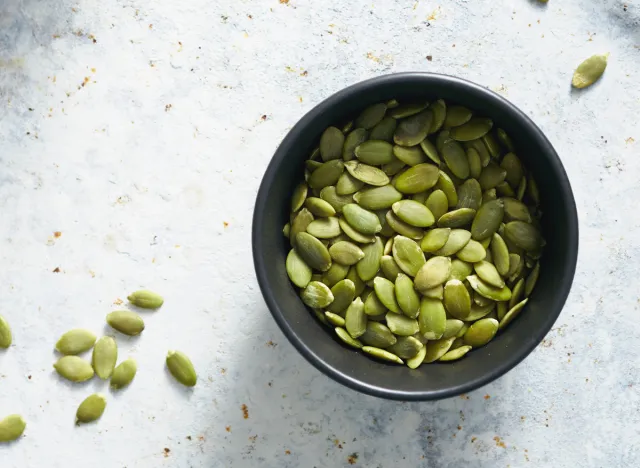
Protein per 1/4 cup: 10.8 grams
If you don’t mind a crunchy texture to your smoothie, Sabat suggests trying pumpkin seeds in your next drink.
“Pumpkin seeds are high in protein and healthy fats, offering a slight crunch and nutty flavor to your smoothie while supporting satiety,” says Sabat. This satiety effect comes from its high protein content, but its fiber and healthy fat content also help make this seed as filling as it is.
Quinoa
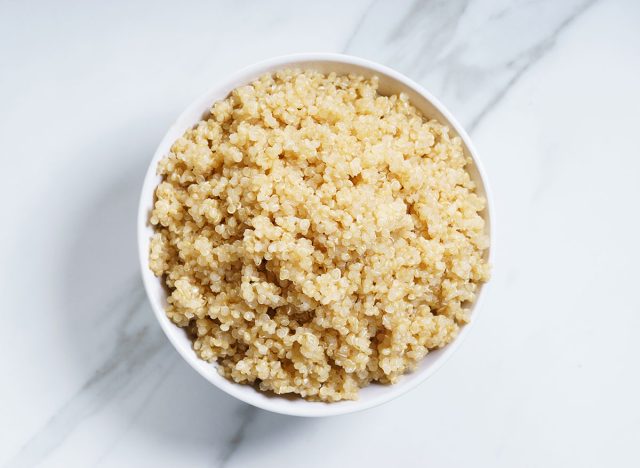
Protein per 1/2 cup (cooked): 4.1 grams
This one may sound strange if you haven’t tried it, but cooked quinoa can make for a great high-protein smoothie ingredient.
“Cooked quinoa is a protein-packed grain that can be blended into smoothies, contributing a mild, nutty taste and extra nutrition,” says Sabat. Not only that, but this whole grain contains fiber, iron, magnesium, and folate, so you’ll be giving your body an enormous helping of nutrients in one beverage.














